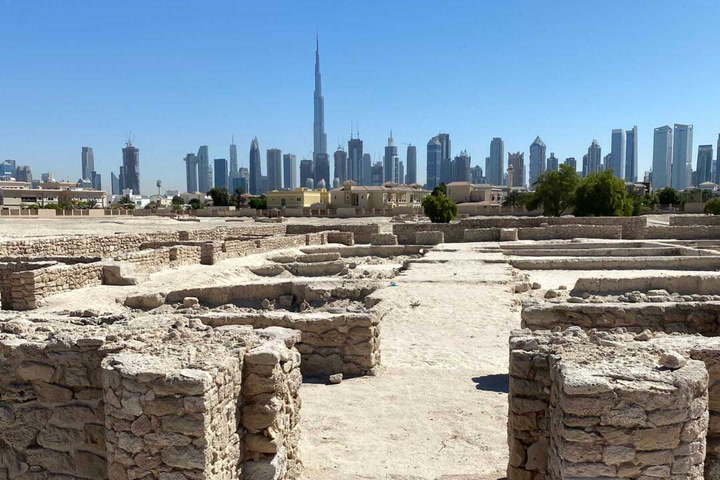Summary
In the United Arab Emirates, history is becoming the next big attraction. In 2021, the U.A.E. celebrated its golden jubilee, the delayed Expo 2020 Dubai, and with the opening of the Museum of the Future, this young country is envisioning an exciting future. However, it is also shining a light on its ancient past, with a number of sites across the country revealing forgotten secrets and unsolved mysteries to curious visitors.
Saruq Al-Hadid
According to Mansour Boraik, principal archaeology specialist for Dubai, the 2002 discovery of the Saruq Al-Hadid Bronze Age settlement in the emirate’s desert has revolutionized our understanding of ancient life in southern Arabia. “Initially, it was believed that five thousand years ago, people had relocated to the coast to fish and trade,” Boraik explains. “However, Saruq Al-Hadid was a lush oasis, where people hunted and settled.” Occupied from the third millennium B.C. until its abandonment in the Iron Age, this early metallurgical center left behind an astonishing array of artifacts. Over 12,000 items have been discovered, ranging from daggers and seals to gold jewelry and, intriguingly, hundreds of metal snakes. The Saruq Al-Hadid Archaeology Museum located by the Dubai Creek houses these remarkable findings.
Jebel Hafit Desert Park
Al Ain, situated in the emirate of Abu Dhabi, has served as a vital desert oasis for thousands of years. It is also home to Abu Dhabi’s highest mountain, Jebel Hafit, and the newly established Jebel Hafit Desert Park. This site showcases the diverse societies that have inhabited the area throughout history. Well-marked hiking trails lead visitors to 122 beehive-shaped stone tombs constructed by a semi-nomadic Bronze Age community over 5,000 years ago. Archaeological explorations have revealed significant findings, while other tombs still hold the promise of undiscovered treasures. Mesopotamian ceramics unearthed here confirm that Al Ain was an important stop on ancient trade routes. The tombs are best viewed in the enchanting honey-colored light of the early morning, making it worthwhile to rise early and catch the desert sunrise after a night spent in one of the park’s dome tents. For a taste of local flavor, guests can enjoy simple and delicious options from the onsite food truck, or embrace the authentic desert camping experience by grilling dinner over a personal firepit.
Jumeirah Archaeological Site
Nestled in a beachside Dubai neighborhood, the ruins of a ninth-century city represent the oldest early-Islamic-era site discovered in the U.A.E. Visitors can stop by the new Jumeirah Archaeological Site visitors’ center to view artifacts from the excavation, including carnelian beads, glazed jars, and silver coins. Afterwards, guided buggy tours through the remains of a market, a mosque, and the city’s first “hotel”—an ancient caravanserai that catered to traders from Oman and Persia—offer a fascinating glimpse into the past. To relax and reflect on these mysteries, a visit to the onsite Arabian Tea House provides the perfect setting for sipping a sweet karak chai.
Mleiha Archaeological Center
In the rolling red dunes of Sharjah, the emirate located just north of Dubai, lies an area rich in archaeological significance. Discoveries in Mleiha date back an incredible 130,000 years, indicating it may have been one of the first human settlements after leaving Africa. The well-curated archaeological center displays these artifacts alongside items from later periods such as the Neolithic, Bronze, and Iron Ages, including flint tools from the sixth millennium B.C., Bronze Age red coral necklaces, and foreign coins from the first century. An exciting four-wheel-drive tour takes guests to a stone outcrop filled with fossilized marine gastropods, concluding with stargazing through a high-powered telescope from a private Bedouin-style tent. This provides an exceptional opportunity for historical immersion.





